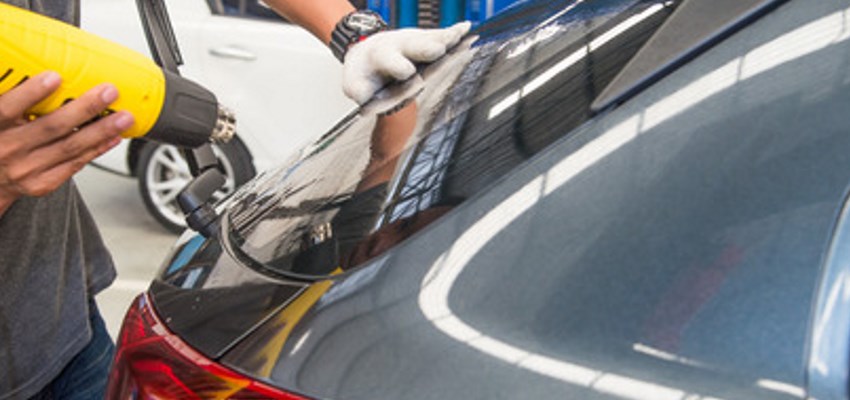Getting Tints? Check out the Window Tinting Laws in CT
Having tinted windows on your vehicle is a practical choice, as it will help to keep your vehicle cooler, help hold the glass together in an accident, and will help reduce glare. Tinted windows also offer an air of sophistication.
But drivers in Connecticut need to be aware of the state’s window tinting laws, which are designed with safety in mind.
Compliance Sticker
When you get your windows tinted after buying the car, the state says you must display a window sticker provided by the Department of Motor Vehicles. The sticker certifies that the tints allow enough light to come through the windows (no less than 35% unless there is an exemption, discussed more below.)
What Can be Tinted
Window tinting laws in CT provide that you may tint the front and rear windows on both the driver’s and passenger’s side. CT drivers may not tint the entire front windshield; it can only be tinted from the top of the window to a point that is at least 29 inches above the top of the driver’s seat.
Multipurpose Vehicles
If you drive a multipurpose vehicle (MPV) such as certain trucks, SUVs or busses, trailers or motor homes, the windows to the rear of the driver can actually be tinted darker than the others if the vehicle has rear view mirrors on each side.
However, this is not automatic; the manufacturer’s label has to identify your vehicle as an MPV to qualify for this exception.
Medical Exception
Connecticut‘s window tint laws also provide an exception for drivers with certain medical conditions. So while drivers without the exception must have tinting that lets in at least 35% of the light from outside, persons with a medical exception can qualify for tinting that lets in between 20% – 32% of the outside light.
If you think you qualify for the medical exception, you’ll have to request and complete an application provided by the CT DMV. If the DMV grants your request for exemption, the vehicle will have to be tested and the tint measured at either the Wethersfield or Hamden DMV inspection lanes.
If the vehicle passes the tint inspection, the DMV will validate a form which must be carried in the vehicle at all times instead of using the compliance sticker described above. However, vehicles that have a light transmittance of less than 20% will not be automatically exempted.
Conclusion
Connecticut‘s window tinting laws are designed to keep everyone safer on the roadways. By being aware of the requirements, you can make an informed decision about tinting your windows.


4 thoughts on “Getting Tints? Check out the Window Tinting Laws in CT”